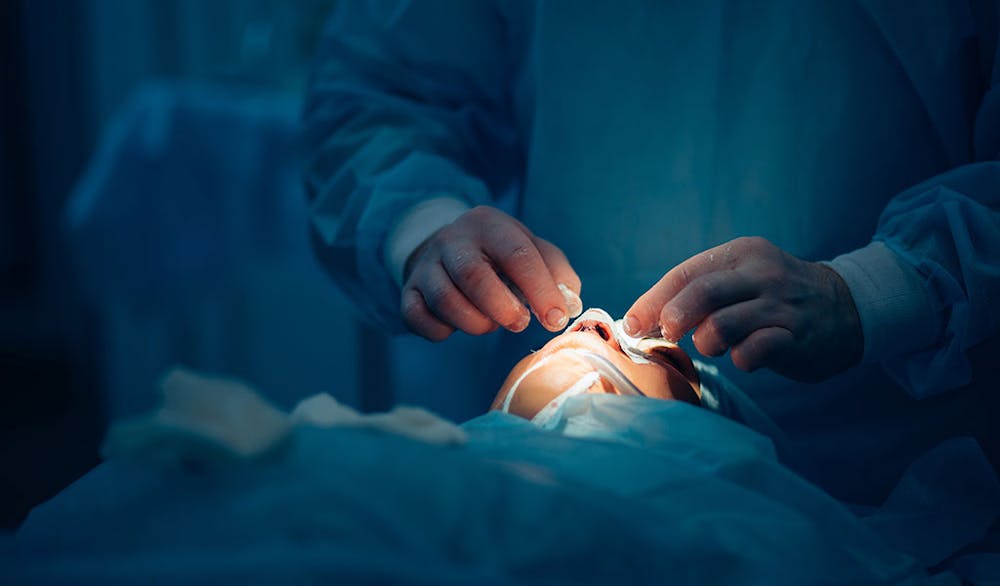
Posted by Dr. Anil R. Shah
Introduction
The nose is one of the most prominent features on a person’s face. It can also be one of the most misunderstood, with many people not understanding why certain procedures are done in certain ways or how they affect your health. In this article, we will discuss what rhinoplasty is, why some people may need it, and the various types of rhinoplasty available in India today.
Ethnic rhinoplasty
Indian rhinoplasty is a surgical procedure to change the shape of the nose to make it look more like an Indian nose. It can be used for both open and closed rhinoplasty, but this article will only focus on closed rhinoplasty because it’s a bit easier.
The goal is to make your nose look as natural as possible so that you don’t have any visible scars or bumps on your face after surgery. If you have problems breathing through your mouth or nose due to the deviated septum (the cartilage inside between two nostrils), this might be ideal for you!
Using piezo technology, which uses ultrasonic vibrations instead of traditional suction methods used by other surgeons around town at their clinics where I go every week, we can achieve amazing results without damaging surrounding tissue.”
Piezo Rhinoplasty

Piezo Rhinoplasty is a technique that uses a piezoelectric device to reshape the nose. It is also known as ultrasonic rhinoplasty because it uses ultrasound waves to operate.
This technique was originally developed for treating kidney stones, so it is minimally invasive and does not involve cutting into the nose (unlike traditional rhinoplasty). In addition, it has fewer risks associated with traditional surgery than other types of facial surgeries, such as facelifts or eyelid surgery.
Some more points: What Is Piezo Rhinoplasty? How Does It Work? Is It Safe? What Are Some Common Complications Of Piezo Rhinoplasty?
The nose has many meanings in Indian culture.
The nose is a symbol of status and beauty in Indian culture. The nose has many meanings, such as:
- A person’s wealth
- Power over other people (a ruler)
- Religion (Brahmanism)
It is also believed that having a beautiful face can bring good luck and happiness, which can be seen through cosmetic surgery done on your face. If you want to look more attractive than others, then it is best to go for rhinoplasty surgery at our hospital because we provide affordable prices without compromising the quality services offered by us exclusively for our clients worldwide!
How does an Indian rhinoplasty work?
The nose is a prominent feature of the face. For many Indian people, it’s also their most important feature. In fact, it’s used to determine whether an Indian person is good or bad: if your nose is big and hooked like yours (or even worse), you’ll be considered lower class!
Indian rhinoplasty has been around for thousands of years and can be traced back to ancient civilizations such as Egypt and Greece. During this time period, many different types of noses were created by doctors who wanted to improve upon existing designs by making them more natural-looking—and they did just that!
Today we have access to all kinds of technology that wasn’t available before modern medicine developed new ways for us humans through science; one example would be how we now have access through surgery but still retain our individuality while having our appearance changed dramatically due largely due its success rate as well as its affordability compared against traditional methods such as Botox injections etcetera…
What is the difference between Piezo and ultrasonic rhinoplasty?
Piezo rhinoplasty uses an instrument called a piezoelectric device to stimulate your septum and cartilage, which results in the reshaping of your nose. This technique can correct deformities such as crooked noses, bulbous nostrils, and other problems with your nasal structure. However, it may take longer than usual for you to see results from this method since it takes up to six months for them to develop fully after undergoing treatment with this type of surgery performed by experts who have years worth of experience doing so safely every day!
What should you expect during recovery?
- Avoid strenuous activity for 2 weeks.
- Avoid alcohol for 2 weeks.
- Avoid blowing your nose during the first week after rhinoplasty, and avoid sleeping on your side during this time as well. The nose may be swollen and tender, so be careful when sleeping or relaxing in bed! You may also want to avoid makeup or hair dye until all swelling has gone down completely (usually within 4-6 weeks).
- Swimming is not recommended for up to 8 weeks following surgery because there is a risk of injuring yourself by falling off the side of the pool due to poor balance due to dizziness caused by swelling and anesthesia.[5]
How long is the recovery period?
The recovery period is typically 3-4 weeks but can sometimes be longer. Avoid strenuous activity for at least 4 weeks after surgery. Avoid sun exposure and tanning beds during this time as well. It’s also important to avoid alcohol and smoking during this time period because they can increase swelling and bleeding around your nose.
When you return home from the hospital or doctor’s office after rhinoplasty surgery, be sure to follow these guidelines:
- Do not sleep on your back or bend over for at least two weeks (to protect the incisions).
- Avoid sneezing or blowing your nose for two weeks after surgery so that doctors do not need to go back into the wound area for further operations related to drainage issues caused by things like allergy medications that were given before Rhinoplasty Surgery was done!
Indian ethnicity
Indian rhinoplasty is more than just a nose job. It’s a cultural phenomenon that has existed for thousands of years and continues to evolve today.
Indian rhinoplasty is not just about changing the shape or size of your nose; it’s also an opportunity to express your identity, change your life and enjoy being in the limelight!
All rhinoplasty techniques are not equal

Choosing a qualified surgeon is critical to getting the best results from your rhinoplasty.
Choosing a qualified hospital with state-of-the-art facilities and equipment can make all the difference in your recovery.
Choosing anesthesiologists who are experts in their field and use only high-quality drugs will help ensure you have an excellent level of comfort during surgery and recovery afterward (and later on). You should also consider choosing a team that includes a facial plastic surgeon.
Avoid the cheap doc and do your research
If you’re considering rhinoplasty, I recommend doing your research. Find a doctor who has experience in the Indian nose and ethnicity. The cheap doc may be able to perform this surgery for you, but he or she will not have any knowledge about the Indian nose, which can make for some complications down the road (like breathing issues).
Conclusion
We hope this article has given you a better understanding of the different types of rhinoplasty procedures and how they can impact your health. If you are still unsure about what type of procedure would be best for you, we recommend consulting with an experienced surgeon who is well-versed in Indian rhinoplasty. They will be able to guide you through all stages of recovery so that it goes as smoothly as possible.

